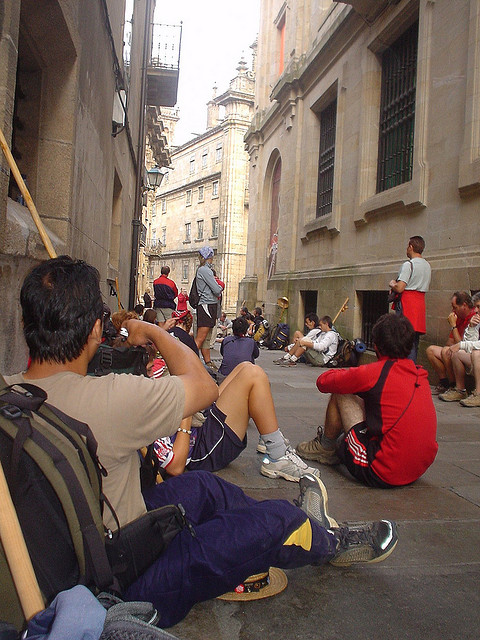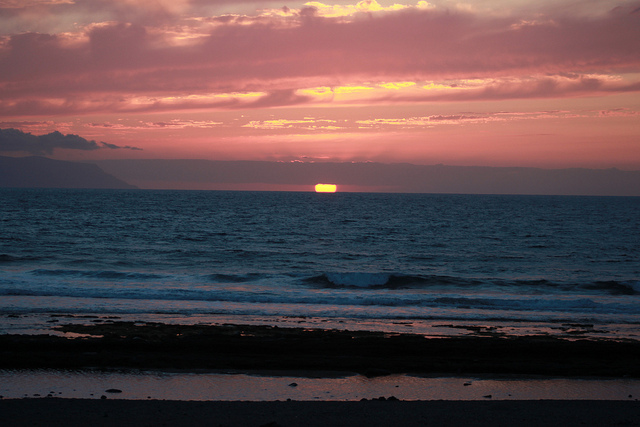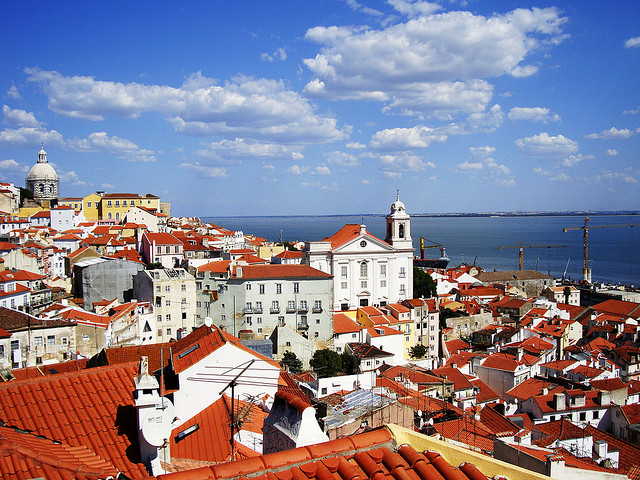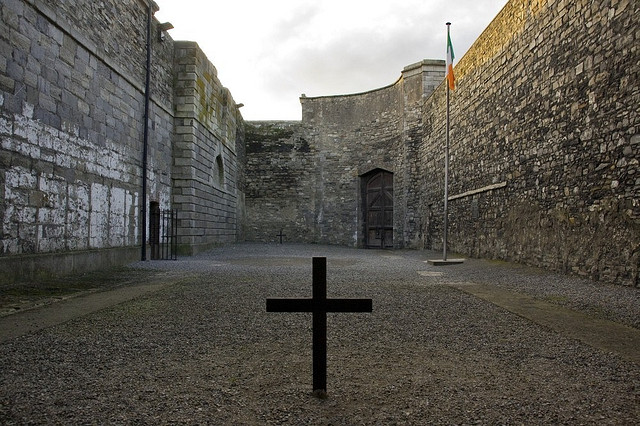Category Archives: Europe Guides
Following an ancient trail: a guide to the Camino de Santiago
The Camino de Santiago – also known as the Way of St James – is a long-distance pilgrimage route across Europe that has been followed by the faithful for centuries. Their ultimate destination is the impressive Santiago de Compostela and any walking tour along the same trail will also lead you to this monument.
This is a wonderful opportunity to follow in the footsteps of travellers from years gone by, with the path first being used as far back as the 9th century by pilgrims keen to visit the place where the remains of St James are said to be interred.
A bit of history…
For the uninitiated, the Camino de Santiago runs from the French border across Spain to Santiago de Compostela near the country’s northern coast. There are several routes throughout the rest of Europe that link to the path that begins on the border, but we’re going to focus on the part that’s in Spain.
The pilgrimage was at its most popular during the Middle Ages, with fewer people choosing to make the journey as time went by due to events like the outbreak of the plague and the protestant reformation. In more recent times it has undergone something of a renaissance, with not just religious pilgrims but also keen hikers opting to tackle the challenge.
If you walk at least the final 100 km of the Camino, you’ll receive an official certificate to mark your achievement. It’s worth bearing this in mind when you’re looking at walking holidays on this route, as not all will give you this opportunity. For an example of an itinerary that does, click here.
You’ll be given a booklet known as a Credencial when you set out on your journey and you should collect stamps in this from various points along the way to prove that you’ve trekked the final 100 km to the city.
Hiking on the Camino de Santiago
The Camino de Santiago is a well-trodden path (as you’ve probably gathered), so the hiking underfoot is not difficult. It’s generally regarded as a moderate trek and you certainly cover a fair distance, but while there are ups and downs, you won’t encounter any overly steep inclines on the final stretch of the trail.
There are many landmarks and interesting towns and villages to visit along the way as well, so you’ll want to take your time on this trek and really soak up the camaraderie and atmosphere as you walk with other people on the same route.
If walking along the Camino de Santiago is something you’ve always wanted to do, it could be best to book a tailormade tour to ensure you get to visit all the sites along the way that interest you. Explore Worldwide offers this kind of trip on the Camino de Santiago starting from £840.
Sights on the Camino de Santiago
The first noteworthy landmark you’ll reach on your hike is the 100 km marker indicating to pilgrims that they’ve reached the final leg of their epic journey. Of course, this will come shortly after you’ve started walking, but is nonetheless an exciting sign to see.
Portomarin is one of the first villages you’ll reach on your hike and it has an interesting story, having been relocated from its original location on the orders of General Franco. It’s worth negotiating the narrow streets to find San Pedro church, which is a great example of Romanesque architecture.
Palas de Rei is another village you’ll pass through, but don’t hurry in this settlement – spend a bit of time admiring its central plaza and look out for the town hall, which is of typical Galician design.
As you get closer to Santiago de Compostela, you’ll reach the charming Santa Irene Chapel, which dates from the 18th century and is home to a number of statues of St James.
One of the final stops en route is in Lavacolla, traditionally where pilgrims would wash and change into their best clothes before completing their trek and arriving at the cathedral. From here you have to climb a hill to reach Monte Gozo, which boasts amazing views over to the city and will afford you your first glimpse of the cathedral’s famous spires.
Make sure you plan to have at least one day to fully explore Santiago de Compostela after you’ve finished your hike. In addition to the cathedral, there are many other historical landmarks in the city, such as the Palacio de Gelmirez and the Convento de Santo Domingo de Bonaval.
Enjoy Tenerife on a Budget!
As one of the most popular summer holiday destinations in Europe, Tenerife has developed a thriving tourism industry, with a wealth of excellent attractions, restaurants and other amenities. However, don’t get fooled into thinking a trip to island has to be expensive, as there are plenty of options for budget travelers looking for a cheap holiday in the sun.
While it’s certainly possible to spend a fortune indulging in fine dining, visits to water parks and scuba diving excursions, it’s also very easy to have a truly amazing time here without giving your wallet a workout. After all, when you consider that Tenerife is a volcanic island sprinkled with charming historic towns, gorgeous beaches and unique landscapes, it becomes clear that the isle itself is one giant tourist attraction, and exploring this amazing location is free of charge.
There are also plenty of cheap hotels in Tenerife for those who don’t want to spend a packet on an all inclusive resort, and you’ll find lots information about budget accommodation here. Once you’ve booked your stay you’ll need to start thinking about how you’d like to spend your time (without spending your money) on the island. To help you, we’ve put together a brief guide to enjoying Tenerife on a budget.
Eat like a local
While the popular resorts of Los Cristianos, Playa de las Americas and Costa Adeje are full of the kinds of restaurants that thrive on big-spending tourists, the north of the island boasts its own unique gastronomical culture that is centred small eateries called guachinches. These are basically small makeshift food stalls serving home-cooked dishes using local recipes and ingredients. In accordance with Canarian culture, each guachinche only remains open for three consecutive months at a time, serving no more than three dishes, and usually will only be advertised by a small wooden sign.
Because of this, they tend to be frequented more by locals than tourists, so taking the trouble to find one is a great way to discover some authentic Canarian cuisine at an extremely affordable price. Typical dishes include ceviche and other seafood recipes, as well as crinkly chips known as papas arrugadas.
Explore the island
Rather than splashing out on boat trips or days out at theme parks, why not try exploring the island itself? This way you’ll get to learn more about Tenerife’s history, culture and nature for next to no money.
One place that’s worth visiting is the small town of Garachico on the northern coast. Once the island’s main port, the village’s development was stopped in its tracks when the harbour was destroyed by a volcanic eruption in 1706. Many historic buildings such as the Santa Ana Church and Convent of San Francisco remain, while visitors can also take a dip in the volcanic rock pools, which were created by the same eruption that devastated the port.
Elsewhere, the Teide National Park is home to Spain’s tallest mountain, Mount Teide. This amazing landscape is home to several species of flora that are not found anywhere else in the world, including the beautiful tower of jewels. Taking the cable car to the summit offers amazing views across the island, and is a great way to spend a cheap day out.
Hit the beach
One thing Tenerife is famous for is its climate, and there’s no charge on sunbathing. With so many beaches to choose from you can spend your entire trip discovering the amazingly diverse coastline of the island, adding a sense of adventure to your relaxing beach holiday.
Rather than lounging around in overcrowded resorts like Playa de las Americas, take a trip to Playa Bollullo in Puerto de la Cruz. The black sand, caused by the erosion of volcanic rock, is unlike anything you’ll have ever seen before, and makes for a unique s
Top Tourist Attractions In Portugal
The top tourist attractions in Portugal are unique to the country even though it shares the Iberian Peninsula with Spain. It owes its unique identity to its geographical and cultural separation from its Spanish speaking neighbor. While Portugal might not be the richest country in Western Europe, it has is a rich land with lively cities and plenty of attractions to see an enjoy.
1. Cristo Rei
This Christ the King statue is the country’s most iconic landmark. The Portuguese had it built to give thanks because their country was spared from harm in the second World War. Cristo Rei resembles the world-renowned Christ the Redeemer Statue in Brazil. Situated in Lisbon, Portugal’s capital and largest city. It hasn’t moved an inch since its completion in 1969.
2. National Museum of Ancient Art
The museum of Ancient Art has the most expansive collection of Portuguese art from before the 19th century. Like Cristo Rei, you can find it in Lisbon. Included in its displays are a variety of artworks including sculptures, drawings, and paintings. The oldest collections in the National Museum of Ancient Art are from the Middle Ages. Works of famous artists such as Cristovao de Figueiredo, Francisco de Holanda, and Garcia Fernandes are part of the impressive exhibits.
3. Algarve
The Algarve is a region located in the most southern part of the country and is home to some of the most amazing beaches Portugal has to offer. The Algarve is one of the top tourist attractions in Portugal with more than 10 million tourists coming to visit every year, with a high percentage of British notably escaping the winters back at home. There are many beautiful coastal towns to choose the perfect accommodation and you can stay in everything from hostels to 5-star hotels. For a unique experience, check out Villa Plus, they’ve got a large list of amazing villas to enjoy with your better half or the entire family.
4. Monsanto Forest Park
Home to pleasant countryside, there is no better place to see natural beauty than in Monsanto Forest Park. It has more greenery than anywhere else in Portugal. The area contained by the park used to suffer from reduced wildlife until the government deemed it a protected area. Today, it has an ecological park, a thriving flora, and a recovering population of animals.
5. Berardo Collection Museum
The Berardo Collection Museum opened its doors to the public in 2007 in Lisbon. Unlike the National Museum of Ancient Art, it displays modern artwork. There are more than a thousand individual pieces currently on display. And with more than 2.6 million tourists visiting every year, Berardo Collection is one of the world’s most visited museums.
Works by famous artists like Pablo Picaso, Jackson Pollack, Salvador Dali, and Andy Warhol are part of its exhibits. Berardo Collection Museum is definitely one of the top tourist attractions in Portugal not to miss if you’re an art lover.
Driving around Ireland’s history
If you think that a trip to Dublin Castle is where history begins and ends on a holiday to Ireland then think again. Those who decide to hire a car and explore a little further outside the city will find that there are a lot of historic sites of interest.
Kilmainham Gaol
Take Kilmainham Gaol for example. It is just a short three-and-a-half kilometre drive from Dublin and has plenty of secrets waiting to be unearthed. It was used as a prison up until the 1920s, but today is one of the biggest unoccupied jails anywhere in Europe.
This notorious site has seen some heroic and tragic events in its history and tells the story of a side of Ireland and how it became the nation it is today. Visitors can learn about the political prisoners who were once housed there and how the immense building has now been restored.
Farmleigh House and Estate
Located eight kilometres from the city centre in Phoenix Park is a grand mansion built by Arthur Guinness’ great grandson Edward Cecil Guinness, the first Earl of Iveagh. This eclectic mix of architectural styles is Farmleigh House, accompanied by its charming estate.
It was purchased by the Office of Public Works in 1999 and has since been used to accommodate dignitaries visiting from overseas. Artwork, furnishings and books collected by Guinness for Farmleigh are still present in the house, on loan from the family.
The Victorians and Edwardians, who both had an influence on the estate, had a penchant for ornamental features and the gardens surrounding the house reflect this. Lakeside walks, walled and sunken gardens, as well as an immense variety of plants will greet the visitor.
It is not simply a case of driving up to the house and having a look around, as it is still in use, but guided tours can be arranged in advance or upon arrival.
Rathfarnham Castle
More like a fortified country house than a castle, but still complete with impressive flanker towers, Rathfarnham Castle is an interesting place to visit. It is an easy drive away from Dublin, not far from the village of Rathfarnham.
Originally built in the Elizabethan period for Archbishop Adam Loftus, who was involved in the establishment of Trinity College, it was extensively remodelled towards the end of the 18th century. This process was undertaken with input from world-renowned architects of the day including Sir William Chambers and James ‘Athenian’ Stuart.
Enjoy finding out more about social history with a visit to the castle, which is home to the Berkley Costume and Toy Collection. The toys, dolls and clothes date back to the 18th and 19th centuries and were originally amassed by Countess Ann Griffin Bernstorff, an artist and collector.
The War Memorial Gardens
For those more interested in modern history a visit to the War Memorial Gardens on South Circular Road is a must. The formal planting reflects the sombre duty to remember the 49,400 Irish soldiers who were killed between 1914 and 1918 in the First World War.
Designed by Sir Edward Lutyens there is a sunken rose garden, herbaceous borders and avenues of trees, making it a beautiful as well as interesting place to visit. Granite book rooms have also been built on the site to house manuscripts containing the names of all those Irishmen who died.
These have been intricately illustrated by Harry Clarke and provide a poignant focal point to any visit.








 Welcome to Home Town Travel Guides.com , your source for travel guides written by locals and those who've been there and done that! ~Jeremy
Welcome to Home Town Travel Guides.com , your source for travel guides written by locals and those who've been there and done that! ~Jeremy